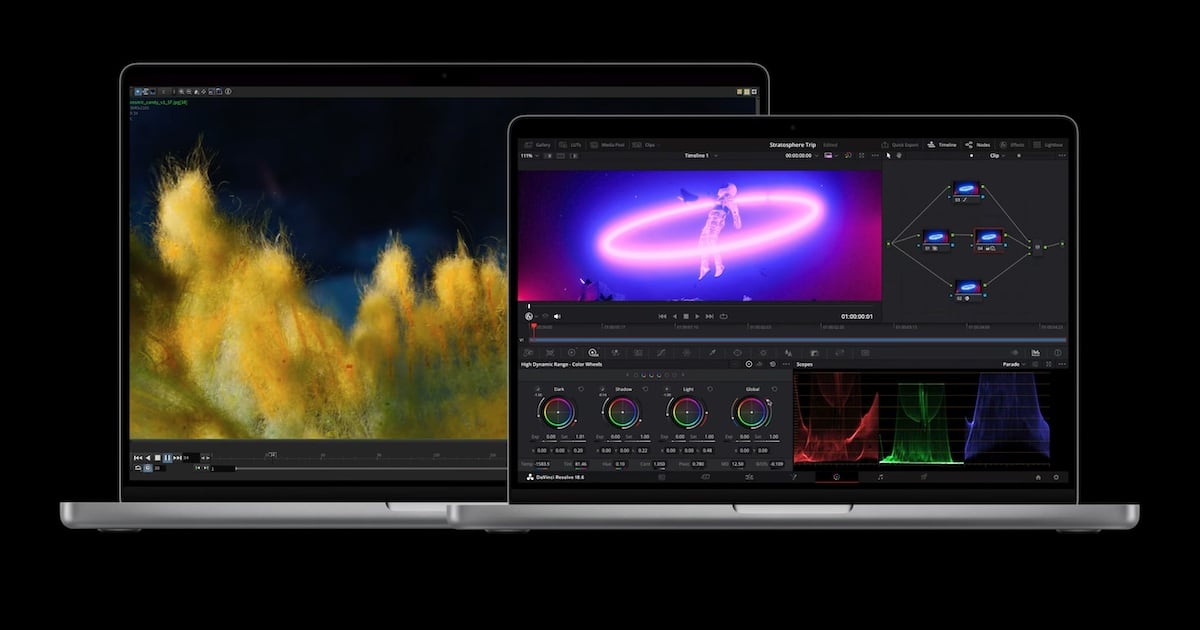Apple introduced the 2023 MacBook Pro at the Scary Fast event on October 30. The lineup comes with several impressive upgrades, like a revamped GPU, faster CPU, larger unified memory architecture, better macOS Sonoma compatibility, and even iterations of the M2 chipset. Here’s a quick breakdown of these features, plus how they affect Mac users.
1. M3 Chipsets
Apple has unveiled the MacBook Pro 2023 with new new M3 chipset. The 14-inch MacBook Pro accommodates the entire M3 family, i.e., M3, M3 Pro, and M3 Max, while the 16-inch model only supports M3 Pro and M3 Max.
The M3 is also the first chipset to utilize 3-nanometer technology on personal computers. It’s the industry-leading technology that powers Apple’s new Dynamic Caching, a system that allocates local memory usage in real-time. Basically, MacBook Pro will perform faster since demanding programs get more GPU allocation.
Note: I particularly like that M3 Macs run a lot quieter than older models. After all, Apple MacBooks are notorious for having noisy fans, especially when running GPU-heavy programs on battery.
Although the entire M3 family boasts superior capabilities than previous Apple Silicon and Intel-based Macs, there are some differences. Let’s take a closer look at these chip variants’ specifications:
M3
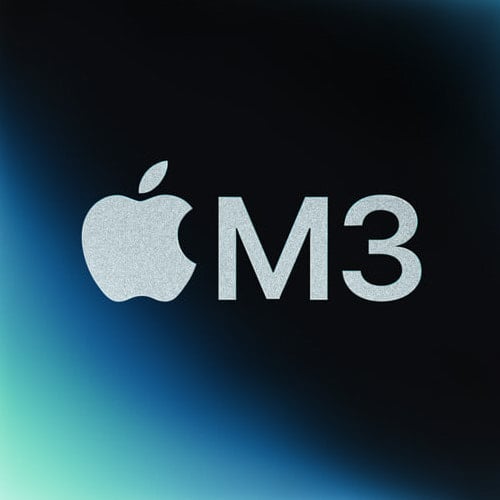
The MacBook Pro M3 has an 8-core CPU, 10-core GPU, 8GB Unified Memory, and 512GB to TB SSD storage. The features might not seem different at a glance. But considering its revamped chipset and larger Unified Memory, Apple claims that the 14-inch MacBook Pro M3 is up to 60 percent faster than the 13-inch MacBook Pro M1. Various programs, from Final Cut Pro to Microsoft Excel, will run faster.
The M3 is ideal for:
- Creatives
- Office Workers
- Researchers
- Students
M3 Pro
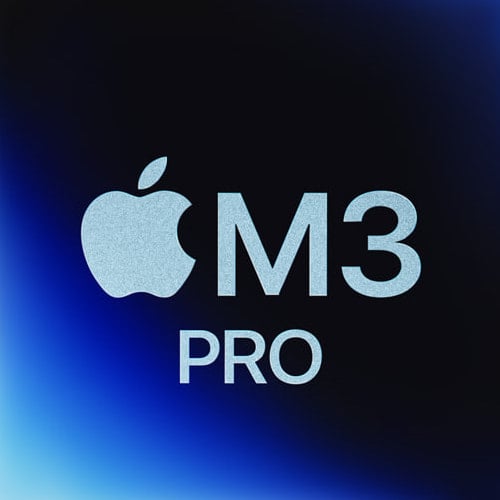
The 14-inch MacBook Pro M3 Pro comes with an 11-core to 12-core CPU, 14-core to 18-core GPU, 18GB Unified Memory, and 512GB to 1TB SSD storage. Meanwhile, the 16-inch model has a 12-core CPU, 18-core GPU, 18GB to 36GB Unified Memory, and 512GB SSD storage. Apple says the 14-inch MacBook Pro M3 is 40 percent faster than the 16-inch MacBook Pro M1. It can run graphics-heavy systems like Oxford Nanopore MinKNOW, Adobe Photoshop, and Adobe Premiere Pro two to five times more efficiently.
The M3 Pro is ideal for:
- Gamers
- Musicians
- Illustrators
- Marketing Directors
- Video Editors
M3 Max
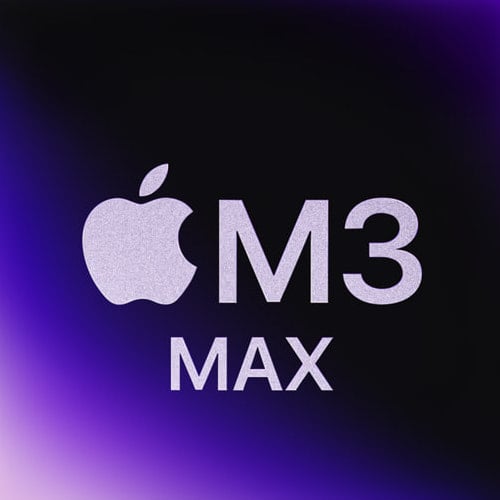
The MacBook Pro M3 Max has a 14-core to 16-core CPU, 30-core to 40-core GPU, 36GB to 48GB Unified Memory, and 1TB SSD storage. It serves as the flagship MacBook Pro model. Apple says the M3 Max is 60 percent faster than a 16-inch MacBook Pro M1 and 1,100 percent faster than any Intel-based Mac. It’s a high-performance device that supports extreme workflow.
The M3 Max is ideal for:
- Advanced Programmers
- AI Developers and Trainers
- Biomedical Researchers
- Competitive Gamers
- Professional Filmmakers
2. Longer Battery Life at Sustained Performance
The 2023 MacBook Pro boasts a longer, more efficient battery life. Not only does it last 22 hours, but it maintains the same performance regardless whether it’s plugged in or running on battery. It’s an especially impressive feat for the MacBook Pro M3 Max. Considering its powerful specifications, you wouldn’t expect it to last more than a few hours, much less the whole day.
3. Larger Unified Memory Architecture Support
The 2023 MacBook Pro models have a much larger Unified Memory. Although they come with the standard 8GB to 48GB architecture, they can support up to 128GB more. An extra Unified Memory support will help you better utilize the M3’s monster CPU and GPU specs. You could run graphics-heavy and GPU-demanding programs simultaneously on battery without worrying about macOS Sonoma crashing.
4. New Space Black Finish
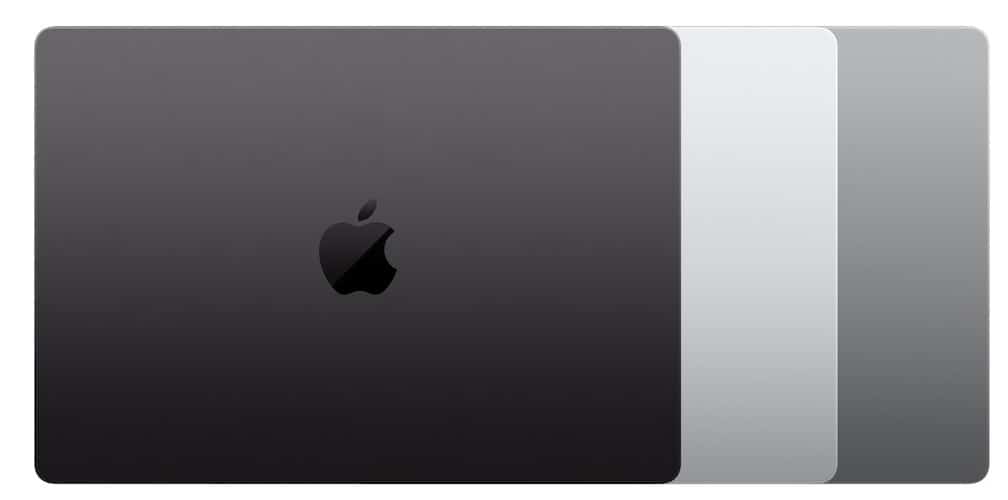
One of MacBook Pro’s biggest aesthetic issues is it only comes in two colors: space gray and silver. It might sound pedantic, but you’d expect broader options considering its steep price tag. Apple will finally address this issue by adding a new color option to the MacBook Pro lineup: space black. It features a gorgeous deep-matte surface with an ashy tint.
And in line with Apple’s mission of building a 100 percent carbon-neutral manufacturing supply chain by 2030, it uses custom alloy made of recycled aluminum. It’s slowly moving away from non-renewable precious metals.
5. High-Performance and Game Modes on macOS Sonoma
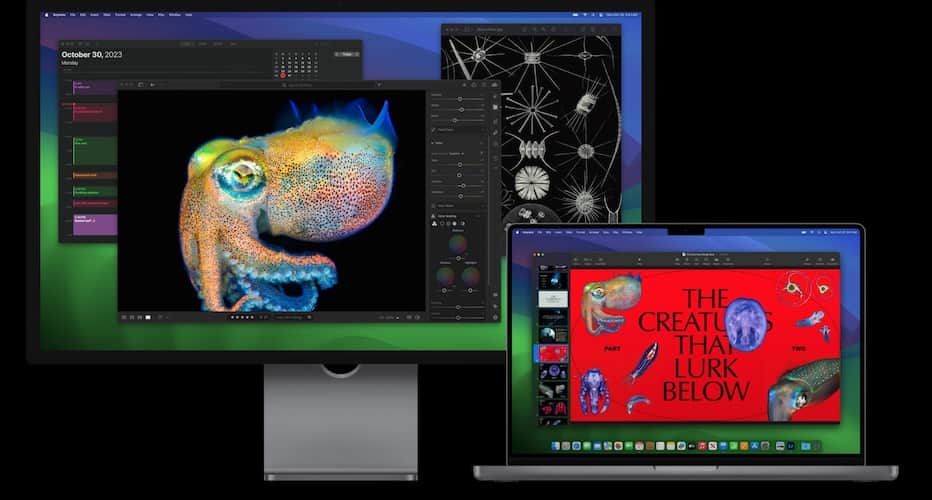
As expected, the 2023 MacBook Pro is optmized for macOS Sonoma. It utilizes all-new Sonoma features, such as High-Performance mode on Screen Sharing and Game Mode. They’re efficient yet very demanding.
Screen Sharing’s High-Performance mode lets users control another Mac’s screen remotely. Although helpful, your device might lag if it doesn’t have the revamped M3 chip and Unified Memory.
Game Mode, on the other hand, is a graphics-heavy feature. It creates a more realistic, immersive gameplay by reducing wireless accessories’ latency and producing high frame rates. You might not appreciate this feature on older Macs with dated graphics.
6. New Entry-Level 2023 MacBook Pro
Apple is introducing a new entry-level MacBook Pro model: the 14-inch MacBook Pro. It’ll phase out the 13-inch MacBook Pro soon. That means buyers will automatically have to pay a higher price for the new M3 chip and a larger screen, plus none of the new MacBook Pro will support the Touch Bar.
How Much Is the 2023 MacBook Pro?
All these new features might justify an upgrade, especially if you’re still using Intel-based Macs, but note that they come with a steep cost. Unfortunately, many MacBook Pro models are getting a price bump.
Here’s what a 14-inch MacBook Pro costs:
- M3: $1,599 to $1,799
- M3 Pro: $1,999 to $2,399
- M3 Max: $3,199
Here’s what a 16-inch MacBook Pro costs:
- M3 Pro: $2,499 to $2,899
- M3 Max: $3,499 to $3,999
Is the 2023 MacBook Pro M3 Worth It?
Whether or not you should get the new MacBook Pro M3 depends on your current setup. If you need a faster laptop for extreme workflow, run GPU-demanding programs often, or still use an Intel-based or M1 MacBook, you can consider upgrading. However, those with the latest MacBook Pro M2 might not notice much of a performance boost.
Whatever the case, M3 is an innovative technology—we can expect faster, more advanced systems as Apple revamps this chipset family.
